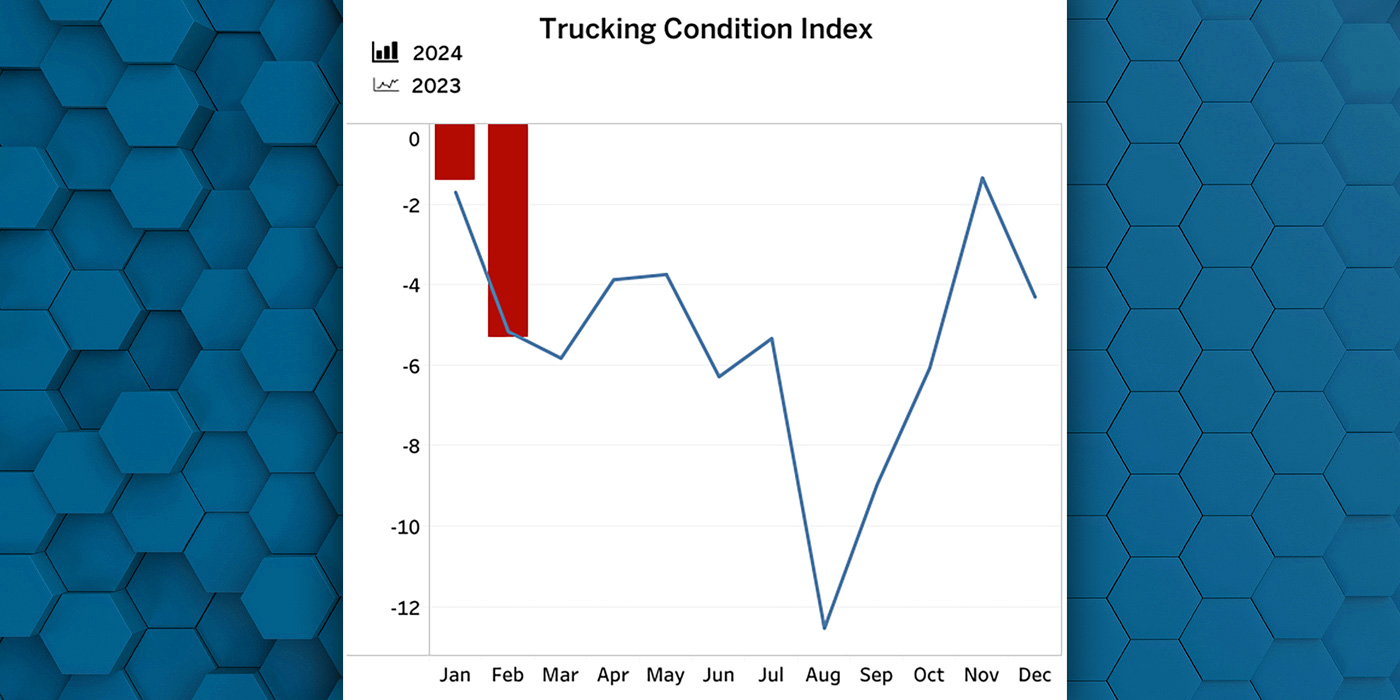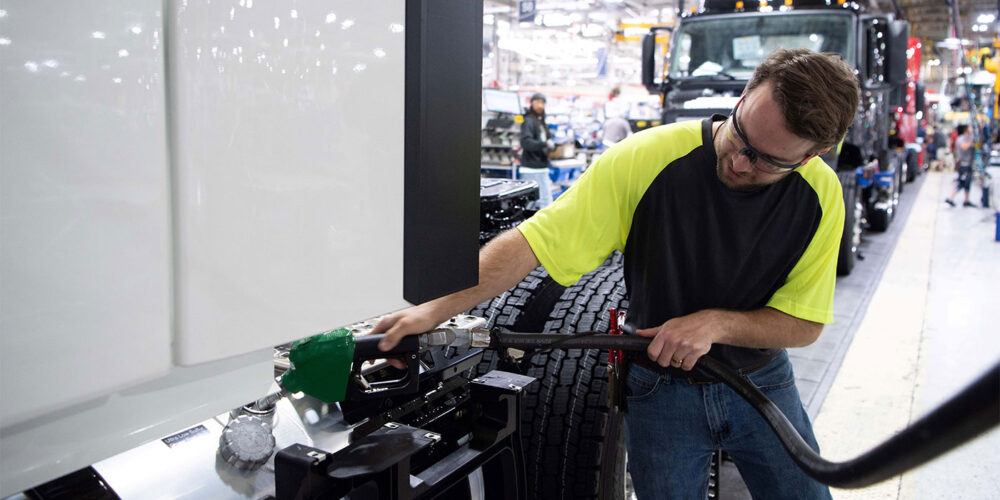
Of all the different metrics that can be used for measuring the energy required to move goods—miles per gallon, ton-miles per gallon, gallons per ton-mile and freight ton efficiency—freight-ton efficiency (FTE), measured in ton-miles per gallons, is the most effective in measuring the amount of energy required to transport a load of goods from Point A to Point B.
In the transport industry, carrying increased weight is a more efficient way to transport goods and minimize CO2 emissions, and freight-ton efficiency provides an accurate measurement of energy consumption. To calculate freight-ton efficiency, one must multiply the weight of the cargo in tons by the distance traveled in miles and then divided by fuel consumed in gallons. If freight shipped around the U.S. could be carried at or close to the maximum load, then fewer trucks would be required, which would reduce the amount of fuel burned and the amount of CO2 emissions.
To put freight-ton efficiency in more practical terms, if one truck carrying one ton one mile gets 10 miles per gallon, the FTE would be 10 ton-miles per gallon. If one truck carrying 20 tons of cargo one mile gets seven miles per gallon the FTE would be 140 ton-miles per gallon. It’s easy to see that carrying more weight or goods is an efficient way to transport goods and minimize CO2 emission.
In 2018, the Starship Initiative truck was designed and built to demonstrate how Class 8 truck sector energy usage can be reduced when the benefits of many available energy-efficient technologies are harnessed. This included optimized aerodynamics, drivetrain and operational efficiencies, and low viscosity, fuel economy and lubricants.
Freight-ton efficiency is the most effective way of measuring the amount of energy required to transport a load of goods from Point A to Point B.
The Starship truck traveled more than 2,300 miles across the southern United States and one of the key metrics measured was freight-ton efficiency. For the cross-country drive, the Starship truck attained and FTE of 178.4 ton-miles per gallon—nearly a 248% improvement over the North America average freight-ton efficiency of 72 ton-miles per gallon for trucks.
With the Starship project, Shell Lubricants wanted to demonstrate how the sum of all the efficiencies contributed to the total gains achieved. The main contribution of lubricants to fuel economy comes from helping to reduce friction between moving components, which will reduce the amount of fuel that must be burned in order to overcome this friction. All the major mechanical systems within the vehicle are lubricated—the wheel bearings, the axles, the transmission and the engine.
In the engine, the lubricant helps protect against wear, cool internal engine components and keeps critical engine components such as pistons free from deposits, to allow efficient combustion. Fleets are able to maximize freight-ton efficiency by utilizing lower viscosity oils.
Freight-ton efficiency makes the most of fuel mileage. A truck seeking maximum fuel mileage only will need to run lightweight and slow. A truck using ton-mile per gallon should carry as much weight as possible and run as efficiently as possible, which will help reduce CO2 emissions.
RELATED: Eight steps to maximize truck efficiency and reduce emissions














